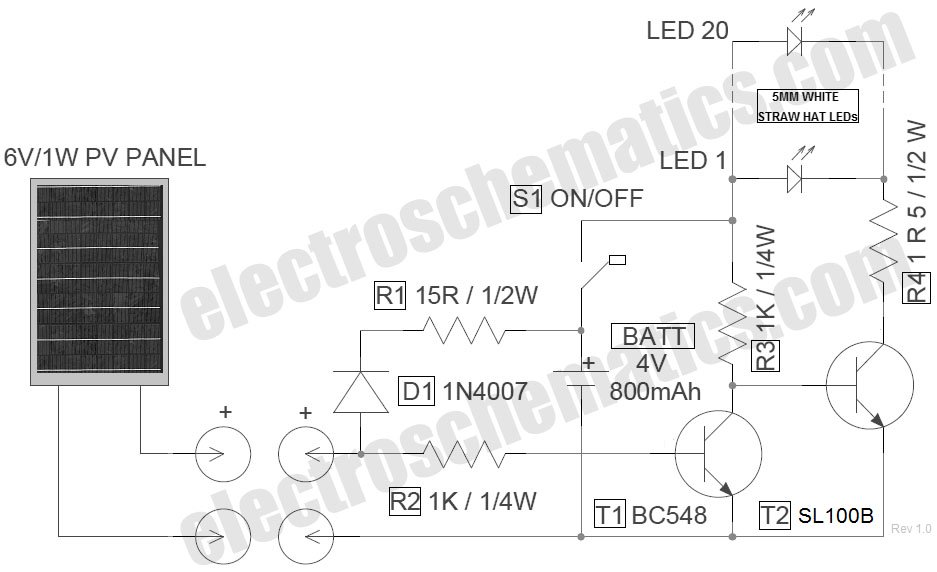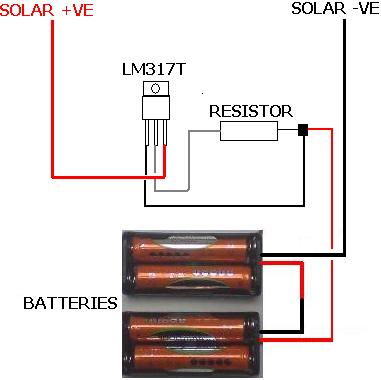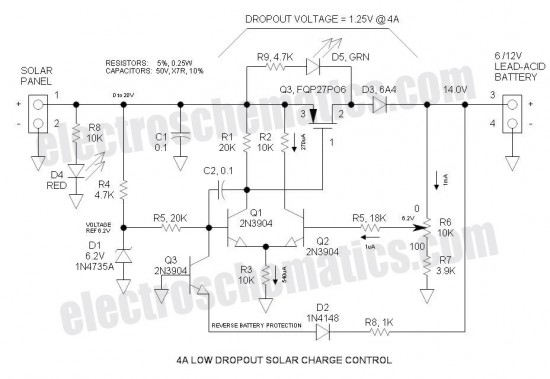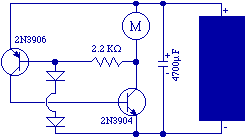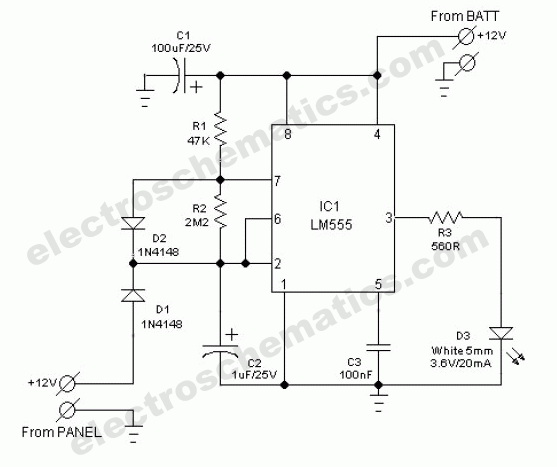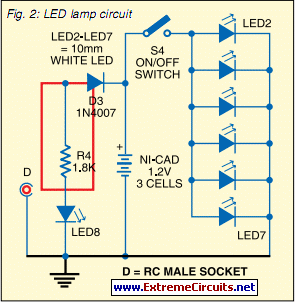
The VTSE solar engine

The VTSE uses the popular 1381 chip and that is its main advantage. The potentiometer (or two fixed resistors) connects one leg between the output and input of the 1381 and the other leg to the supply voltage. These resistors act like a voltage divider when the SE is off and the 1381 output is low. In that case, the voltage that appears at the 1381 input is determined by the ratio of the pot or the two resistors and is usually set for 2 times rated 1381 voltage.
The VTSE circuit is built around the 1381 voltage regulator, which is known for its precision and efficiency in voltage regulation applications. The 1381 chip operates by maintaining a constant output voltage, which is adjustable based on the configuration of the external components connected to it. In this case, a potentiometer or two fixed resistors are employed to set the desired output voltage.
When configuring the circuit, one leg of the potentiometer or the fixed resistors connects to the output pin of the 1381, while the other leg connects to the supply voltage. This configuration forms a voltage divider, which is crucial for establishing the input voltage level at the 1381 chip. The voltage divider's output is determined by the ratio of the resistance values, which allows for fine-tuning of the voltage supplied to the input of the 1381.
In scenarios where the circuit is in a standby state (SE is off), the output of the 1381 is low. Under these conditions, the voltage at the input pin of the 1381 is solely influenced by the voltage divider formed by the potentiometer or resistors. The design typically aims to set this input voltage to approximately double the rated voltage of the 1381 chip to ensure proper regulation when the circuit is activated.
This configuration not only enhances the performance of the 1381 but also provides flexibility in voltage adjustment, making it suitable for various applications where precise voltage control is essential. Proper selection of the potentiometer or resistor values is critical to achieving the desired output voltage and ensuring the reliable operation of the voltage regulator.The VTSE uses the popular 1381 chip and that is its main advantage. The potentiometer (or two fixed resistors) connects one leg between the output and input of the 1381 and the other leg to the supply voltage. These resistors acts like a voltage divider when the SE is off and the 1381 output is low. In that case, the voltage that appears at the 1381 input is determined by the ratio of the pot or the two resistors and is usually set for 2 times rated 1381 voltage.
🔗 External reference
The VTSE circuit is built around the 1381 voltage regulator, which is known for its precision and efficiency in voltage regulation applications. The 1381 chip operates by maintaining a constant output voltage, which is adjustable based on the configuration of the external components connected to it. In this case, a potentiometer or two fixed resistors are employed to set the desired output voltage.
When configuring the circuit, one leg of the potentiometer or the fixed resistors connects to the output pin of the 1381, while the other leg connects to the supply voltage. This configuration forms a voltage divider, which is crucial for establishing the input voltage level at the 1381 chip. The voltage divider's output is determined by the ratio of the resistance values, which allows for fine-tuning of the voltage supplied to the input of the 1381.
In scenarios where the circuit is in a standby state (SE is off), the output of the 1381 is low. Under these conditions, the voltage at the input pin of the 1381 is solely influenced by the voltage divider formed by the potentiometer or resistors. The design typically aims to set this input voltage to approximately double the rated voltage of the 1381 chip to ensure proper regulation when the circuit is activated.
This configuration not only enhances the performance of the 1381 but also provides flexibility in voltage adjustment, making it suitable for various applications where precise voltage control is essential. Proper selection of the potentiometer or resistor values is critical to achieving the desired output voltage and ensuring the reliable operation of the voltage regulator.The VTSE uses the popular 1381 chip and that is its main advantage. The potentiometer (or two fixed resistors) connects one leg between the output and input of the 1381 and the other leg to the supply voltage. These resistors acts like a voltage divider when the SE is off and the 1381 output is low. In that case, the voltage that appears at the 1381 input is determined by the ratio of the pot or the two resistors and is usually set for 2 times rated 1381 voltage.
🔗 External reference
